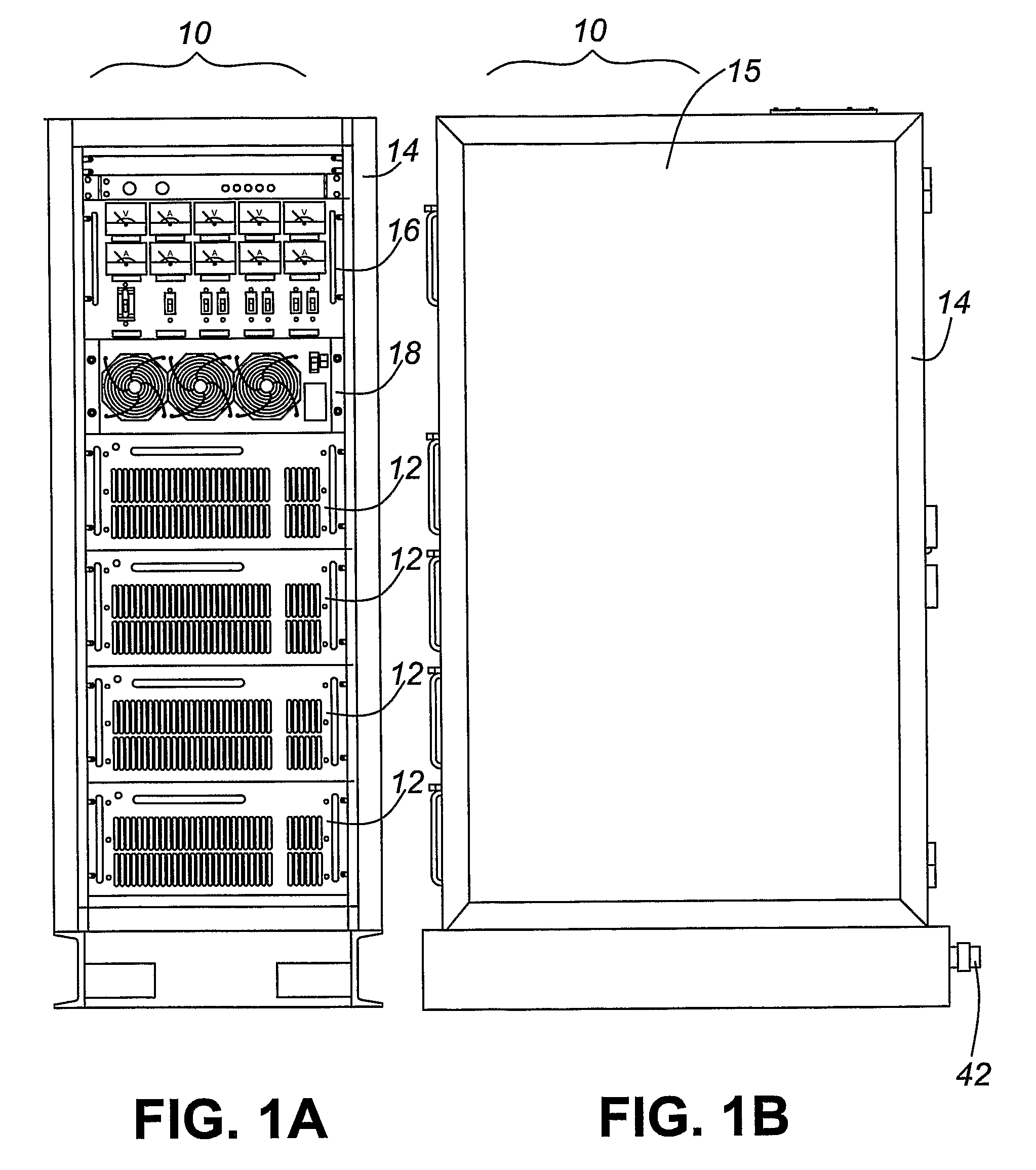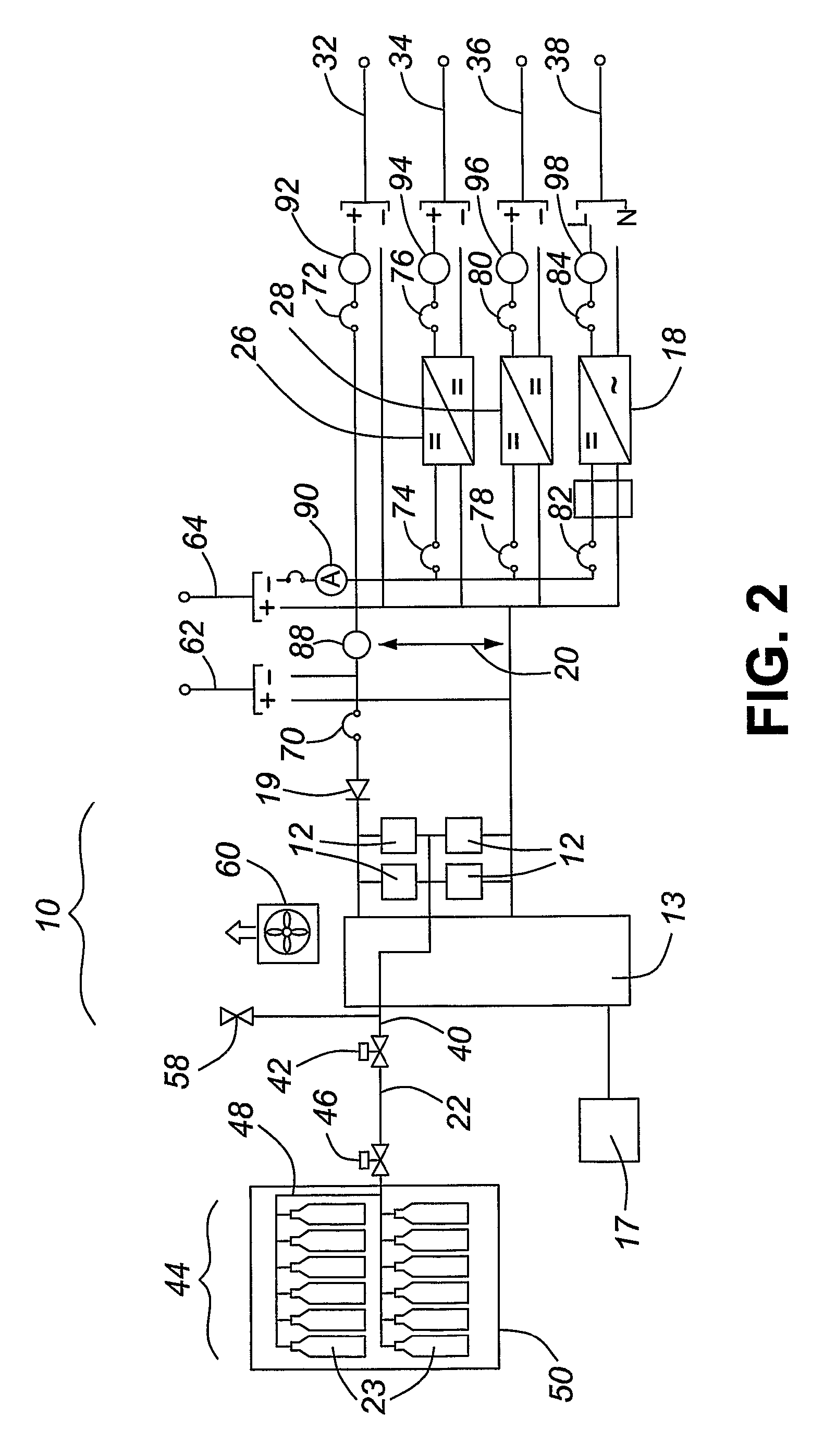Fuel cell power generation system
a fuel cell and power generation technology, applied in the direction of fuel cells, emergency supply, sustainable buildings, etc., can solve the problems of difficult time-consuming and laborious cleaning of fuel or electrolyte spills, high cost of transporting such equipment and fuel, and limited implementation of fuel cell systems in real-world applications. achieve the effect of reducing stack stress
- Summary
- Abstract
- Description
- Claims
- Application Information
AI Technical Summary
Benefits of technology
Problems solved by technology
Method used
Image
Examples
first embodiment
[0025]FIGS. 1-4 relate to the invention. The system 10 shown in FIGS. 1(a) and (b) has a standardized relay rack 14, or “nineteen inch rack” as popularly referred to in the telecommunications and computing industries. The rack 14 is a standardized (EIA 310-D, IEC 60297 DIN 41494 SC48D) system for mounting various modules in the rack 14. The rack 14 consists of two long, thin metal plates 15 standing vertically in the same plane with a space of approximately eighteen inches between them. Sliders (not shown) are mounted to each plate 15 at vertical intervals to define bays to receive components within the rack 14. It is within the scope of the invention to modify the rack height to provide more or fewer component bays.
[0026]The system 10 comprises multiple components that are configured to mount within the rack 14; in particular, the components each have a width and depth that correspond to the rack's width and depth, and a height that is a multiple of a standard unit of rack height, ...
second embodiment
[0057]According to the invention, and referring to FIG. 5(a), the metering and power conversion module 16 is replaced by a metering module 110, and all power conversion is performed by separate power conversion modules 18 that can be mounted in the rack 14 and electrically connectable together and to electrically powered devices via an output bus assembly 112. Furthermore, rack control and hydrogen supply control are combined with monitoring, annunciation and communications control into a single control module 113 mounted on the rack 14. By modularizing all of the power conversion components, this system 10 can be easily configured to meet the specific power needs of a particular site. The output bus assembly 112 enables the power conversion components to be easily swapped, therefore enabling the system 10 to be easily reconfigured to meet different power needs.
[0058]The metering module 110 is similar to the metering and power conversion module 16 except that it does not contain any...
PUM
| Property | Measurement | Unit |
|---|---|---|
| power | aaaaa | aaaaa |
| current | aaaaa | aaaaa |
| AC voltage | aaaaa | aaaaa |
Abstract
Description
Claims
Application Information
 Login to View More
Login to View More - R&D
- Intellectual Property
- Life Sciences
- Materials
- Tech Scout
- Unparalleled Data Quality
- Higher Quality Content
- 60% Fewer Hallucinations
Browse by: Latest US Patents, China's latest patents, Technical Efficacy Thesaurus, Application Domain, Technology Topic, Popular Technical Reports.
© 2025 PatSnap. All rights reserved.Legal|Privacy policy|Modern Slavery Act Transparency Statement|Sitemap|About US| Contact US: help@patsnap.com



